The 2014 Godzilla remake pays homage to the original 1954 Japanese film while also incorporating the themes of later versions, particularly the considerations of the repercussions of nuclear weapons and whether or not the titular monster is actually a savior for humankind. Make no mistake, the new Hollywood incarnation of Godzilla is a walking natural disaster, but this interpretation of the iconic kaiju has no ill intent towards humans.
As that version continues with Godzilla: King of the Monsters, a sequel promising even more ferocious battles between a variety of giant creatures, including Mothra, Rodan, and King Ghidorah, we can’t forget about Hideaki Anno and Shinji Higuchi‘s Shin Godzilla (aka Godzilla: Resurgence). The 31st entry in the Japanese Godzilla series produced by Toho Pictures was released in 2016, between the two American installments, in 2016. And it offers something far more sinister.
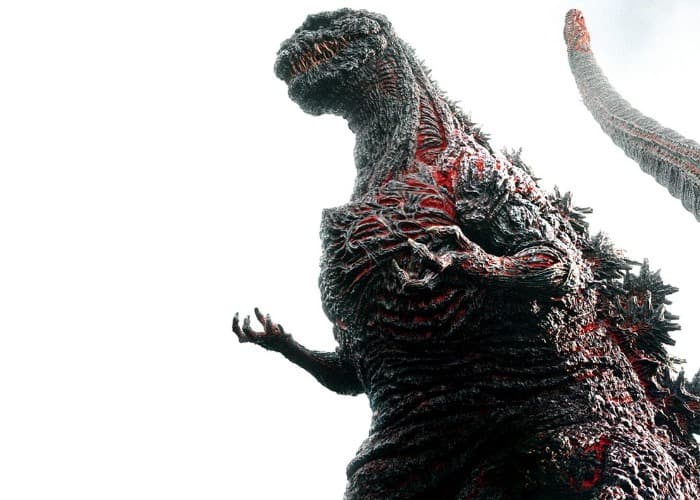
Shin Godzilla
Dread, devastation, and utter hopelessness are merely a few words that can be used to describe the horror that is Shin Godzilla, a creature with one purpose: humanity’s annihilation. Negotiations are out of the question with this behemoth. And don’t bother trying to subdue him to your will. Shin Godzilla reigns a devastating inferno on everything standing in his way.
Hollywood’s Godzilla is more of a neutral threat to the human race focused on battling other kaiju, allowing humans to begin to worship the king of the monsters as a protector against other creatures intent on destroying humanity. Shin Godzilla rejects all of this. Like the 1954 Godzilla, the film focuses on the titular kaiju’s rampage across Japan after being agitated by nuclear radiation.
To understand what sets Shin Godzilla apart as the most frightening kaiju, we must first understand the difference in the films’ creators. Both of the directors involved with the current Hollywood Godzilla, Gareth Edwards and King of the Monsters helmer Michael Dougherty, have a grounded filmography compared to the directors of Shin Godzilla. Edwards’ work before Godzilla includes 2010’s Monsters, an indie sci-fi horror film, while Dougherty previously made Trick ‘r Treat and Krampus, horror films with modest budgets and straightforward narratives.
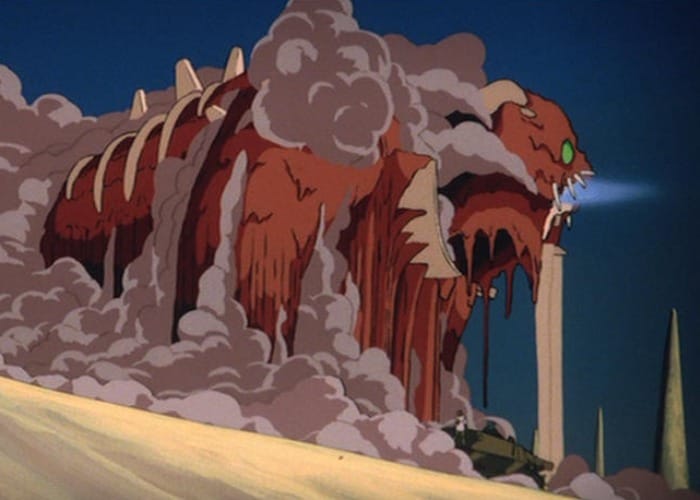
One of Anno’s first designs featured in Nausicaä of the Valley of the Wind
Hideaki Anno is a critically acclaimed animator known for his work on Hayao Miyazaki’s apocalyptic 1984 epic Nausicaä of the Valley of the Wind and his own iconic mecha anime series Neon Genesis Evangelion from 1995. Shinji Higuchi, an acclaimed storyboard artist and visual effects director, is known for his work on the Heisei Gamera trilogy of the 1990s and the famous 1995 anime Attack on Titan, and he also worked with Anno on Neon Genesis Evangelion. The Shin Godzilla filmmakers have an edge on the Hollywood-based directors when it comes to apocalyptic worlds, giant monsters, and insane visual effects.
Due to their backgrounds, Anno and Higuchi weren’t content with just a pure remake of the 1954 Godzilla. Instead, they wanted to leave their mark on the series by mixing the narrative of the original series with their own vision. Higuchi stated his intentions as being to provide the “most terrifying Godzilla that Japan’s cutting-edge special effects moviemaking can muster.” The two didn’t just direct the film but helped create it from the ground up with Anno writing the screenplay and Higuchi directing the film’s nightmarish visual effects.
When Godzilla makes his first appearance in Edwards’ film, the creature ignores the US Navy ships docked in Honolulu. As he makes landfall, the creature causes a tsunami leading to military forces firing upon him. The kaiju ignores their feeble attempts as it moves toward the MUTO, which is the actual aggressor against the population of the island. The difference between how Godzilla and the MUTO treat the people of Hawaii and its landscape is another indicator that Godzilla might be humanity’s protector against other kaiju.
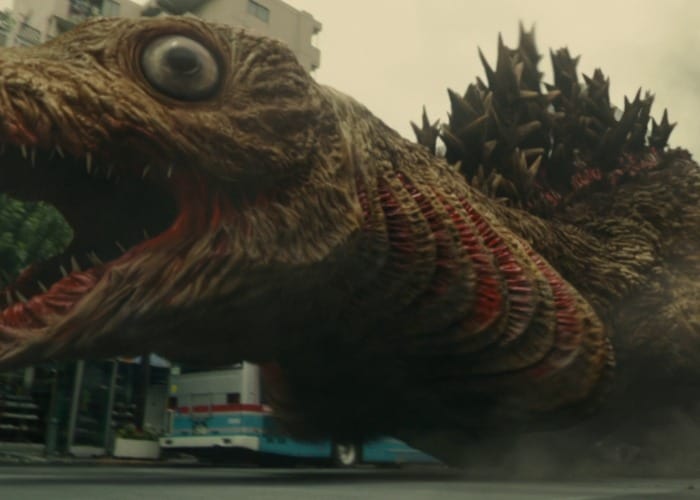
Shin Godzilla
Meanwhile, there is no such subtlety to Shin Godzilla’s first appearance on land, as the creature is a far cry from the King of Monsters we are familiar with. This one is amphibian in nature, with fish eyes, gills, and most importantly, undeveloped limbs. Slithering across the streets of Tokyo, the creature causes confusion amongst the citizens as to what is attacking them and the government as to how to classify it. Before a better response can be made, the creature suddenly begins to grow limbs and stand upright, making no effort to avoid its surroundings as it climbs over buildings and crashes through bridges. True to the directors’ typical work, this is a creature unlike any we’ve seen before, as the titular mutant abomination rapidly evolves to traverse Tokyo and oppose Japan’s military might.
Watching this creature transform from goofy but dangerous into its final form is one of the most terrifying aspects of Shin Godzilla. Unlike the Hollywood version, Shin Godzilla oozes and pulsates, representing its radioactive origin. Its red coloration evokes blood, but more importantly, it symbolizes the creature’s rage. This rage is only increased as the Japan Self-Defense Forces serve as an annoyance rather than a threat to the creature. When the US intervenes with a massive airstrike from B-2 bombers, Shin Godzilla unleashes his most devasting attack, an atomic breath attack so fierce and horrifying that it is highly debated as being the most destructive display of power from any Godzilla incarnation.
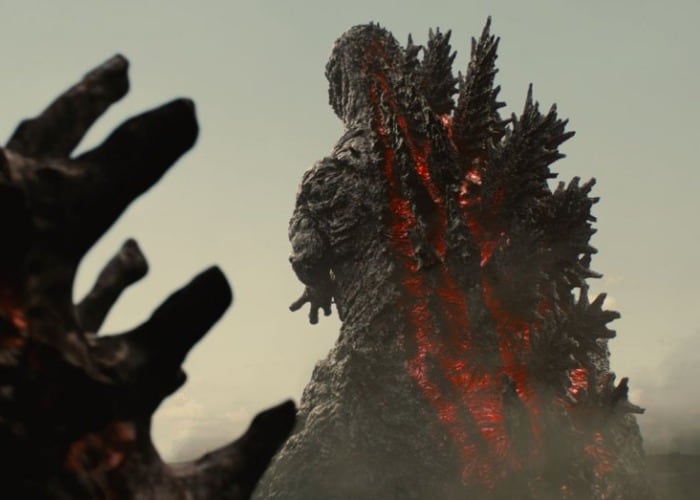
Shin Godzilla
The buildup to this scene features an ominous atmosphere as the audience realizes something is not right. When Shin Godzilla roars for the first time, “Who Will Know,” a melancholy song composed by Shiro Sagisu that is rightfully suited for what transpires, comes on the soundtrack. The creature unleashes a fiery blast that obliterates everything in front of him, engulfing the whole city in flames. The blend of visuals, music, and symbolism is something only the combined directors could have envisioned.
This rage drastically contrasts against the Hollywood MonsterVerse Godzilla, who leaves destruction in his wake not out of anger but in pursuit of a MUTO. The “Massive Unidentified Terrestrial Organism” feed on nuclear energy and thus destroy atomic power plants in its wake of consumption. When the humans realize Godzilla’s true purpose, they aid the kaiju into defeating the two MUTO. This commensalism is explored further in Godzilla: King of The Monsters as the humans wonder which other kaiju are friendly and which pose a threat to mankind.
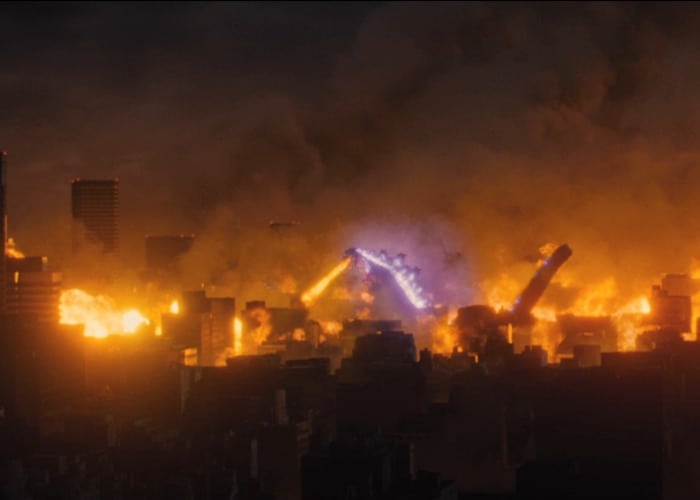
Shin Godzilla
Instead of Shin Godzilla symbolizing nuclear holocaust from the perspective of his victims, as in the 1954 Godzilla, Anno and Higuchi wanted the beast to represent recent disasters and how unprepared the Japanese government was in the face of them. The 2011 Fukushima Daiichi nuclear disaster and Tōhoku earthquake and tsunami brought destruction upon Japan, killing more than 19,000 citizens as the residents closest to the aftershocks and waves had only minutes to prepare. By basing Shin Godzilla’s destruction on those tragedies, the film is evocatively devastating.
After the 1954 Godzilla, Toho began realized that a Godzilla who only rampaged across cities wasn’t profitable. Veering away from a creature who symbolized the nuclear holocaust, the studio discovered a Godzilla that battled other kaiju was more marketable to a wider audience. By the time Ghidorah, the Three-Headed Monster, the 5th installment of the Godzilla series released in 1964, Godzilla was already being viewed as Japan’s savior against other monsters.

Godzilla 1954
While the MonsterVerse Godzilla pays homage to the 1954 version of Godzilla, it still resembles the later incarnations in mannerisms, making it more of a neutral hero for humanity. Shin Godzilla, on the other hand, is not just a remake of the 1954 Godzilla but a resurgence of what the original creature represented more than 60 years ago: fear.
The post Why ‘Shin Godzilla’ Remains the Scariest Godzilla to Date appeared first on Film School Rejects.
from RSSMix.com Mix ID 8320810 http://bit.ly/2Z19r57
No comments:
Post a Comment